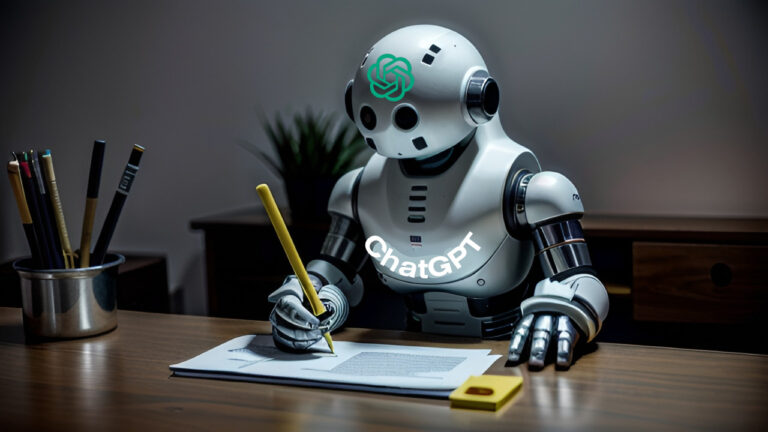In today’s digital age, academic integrity is of utmost importance, with institutions around the world striving to ensure that students submit original work and uphold the principles of honesty and intellectual integrity. To this end, plagiarism detection tools such as SafeAssign have become indispensable tools for educators, helping to identify instances of plagiarism and uphold academic standards. However, as technology continues to evolve, questions have arisen about the effectiveness of these tools in detecting more sophisticated forms of plagiarism, such as content generated by language models like ChatGPT. In this article, we’ll explore the capabilities of SafeAssign and examine whether it can detect content generated by ChatGPT.
Understanding SafeAssign
SafeAssign is a plagiarism detection tool developed by Blackboard, widely used by educational institutions to identify instances of plagiarism in student submissions. The tool works by comparing submitted documents against a vast database of academic content, as well as publicly available internet sources, to identify similarities and flag potential instances of plagiarism. SafeAssign generates an Originality Report for each submission, highlighting any matches found and providing instructors with the information they need to assess the originality of the work.
Challenges of Detecting ChatGPT Content

ChatGPT, a language model developed by OpenAI, is capable of generating human-like text based on the input it receives. Unlike traditional plagiarism, where students may copy and paste passages from existing sources, content generated by ChatGPT is often original and may not be directly verifiable through conventional means. This poses a significant challenge for plagiarism detection tools like SafeAssign, which rely on comparing submitted documents against existing sources to identify matches.
While SafeAssign is a powerful tool for detecting conventional forms of plagiarism, its effectiveness in detecting content generated by ChatGPT is limited. Because ChatGPT generates text that is original and may not match any existing sources, SafeAssign may not flag it as plagiarized, even if it bears a resemblance to other content. Additionally, ChatGPT can generate text in a wide range of styles and tones, making it difficult for SafeAssign to accurately identify matches based on language alone.
Strategies for Addressing ChatGPT Plagiarism
While SafeAssign may not be able to detect content generated by ChatGPT directly, there are several strategies educators can employ to address this challenge:
- Educate Students: Educating students about the risks and consequences of using AI-generated content without attribution is essential. By raising awareness about the ethical implications of using ChatGPT for academic purposes, educators can help prevent instances of plagiarism before they occur.
- Use Contextual Clues: While SafeAssign may not be able to detect ChatGPT-generated content directly, instructors can use contextual clues to identify suspicious submissions. For example, if a student’s writing style suddenly changes or if the content seems unusually sophisticated, it may warrant further investigation.
- Encourage Critical Thinking: Encouraging students to think critically about the sources they use and the content they generate can help prevent plagiarism. By emphasizing the importance of originality and independent thought, educators can empower students to produce their own work rather than relying on AI-generated content.
- Explore Alternative Detection Methods: In addition to SafeAssign, educators can explore alternative plagiarism detection methods that may be better suited to detecting AI-generated content. These may include tools specifically designed to detect machine-generated text or manual review by instructors familiar with the capabilities of language models like ChatGPT.
SafeAssign is a plagiarism detection tool commonly used by educational institutions to ensure academic integrity and prevent students from submitting plagiarized work. However, as technology advances, questions arise about the tool’s ability to detect plagiarism from sources beyond traditional written text. One such concern is whether SafeAssign can detect content generated by Chat GPT models, which are increasingly used for generating text in various contexts, including academic assignments.
Chat GPT, short for Generative Pre-trained Transformer, is an advanced natural language processing model developed by OpenAI. It is capable of generating human-like text based on the input provided to it, making it a valuable tool for tasks such as content creation, conversation generation, and text completion. However, the use of Chat GPT models also raises concerns about the potential for plagiarism, as students could theoretically use these models to generate content for their assignments without proper attribution.
So, can SafeAssign detect content generated by Chat GPT models? The short answer is: it depends. SafeAssign works by comparing submitted documents against a vast database of academic papers, internet sources, and other student submissions to identify matching or highly similar text. It uses a combination of text matching algorithms and machine learning techniques to detect instances of plagiarism. However, its effectiveness in detecting content generated by Chat GPT models may be limited by several factors.
Can SafeAssign Detect ChatGPT?

Firstly, SafeAssign relies on the existence of matching text in its database to identify plagiarism. If the content generated by a Chat GPT model is sufficiently unique or has not been previously submitted to SafeAssign, it may not trigger any flags in the system. This is especially true if the generated text is paraphrased or modified to some extent, making it less likely to match existing sources verbatim.
Secondly, SafeAssign may struggle to distinguish between original content and content generated by Chat GPT models, particularly if the generated text is well-written and contextually relevant to the assignment topic. While SafeAssign can detect direct matches to existing sources, it may be less effective at identifying instances where the content has been paraphrased or rephrased in a way that evades detection.
However, it’s worth noting that SafeAssign is continually being updated and improved to address emerging challenges in plagiarism detection. As the use of AI-generated content becomes more prevalent, it is likely that tools like SafeAssign will adapt to better detect and prevent plagiarism from such sources. This may involve incorporating more sophisticated text matching algorithms, leveraging machine learning techniques to identify patterns indicative of AI-generated content, and expanding the database of sources against which submissions are compared.
In addition to technological solutions, addressing the issue of plagiarism from AI-generated content also requires a broader conversation about academic integrity and ethical use of technology in education. Educators and institutions play a crucial role in educating students about the importance of citing sources properly, critically evaluating information, and upholding academic standards. By fostering a culture of integrity and ethical behavior, institutions can mitigate the risk of plagiarism and ensure that students engage with AI technologies responsibly.
In conclusion, while SafeAssign may have limitations in detecting content generated by Chat GPT models, it remains an important tool for promoting academic integrity and deterring plagiarism. As AI technology continues to advance, it is essential for educators and institutions to stay vigilant and adapt their approaches to plagiarism detection and prevention accordingly. By combining technological solutions with educational efforts, we can uphold the integrity of academic work and ensure that students use AI technologies responsibly and ethically.
While SafeAssign is a valuable tool for detecting plagiarism, its effectiveness in identifying content generated by ChatGPT is limited. As technology continues to evolve, educators must remain vigilant and adapt their strategies for maintaining academic integrity accordingly. By educating students, using contextual clues, encouraging critical thinking, and exploring alternative detection methods, educators can help ensure that academic standards are upheld in an era of rapidly advancing AI technology.